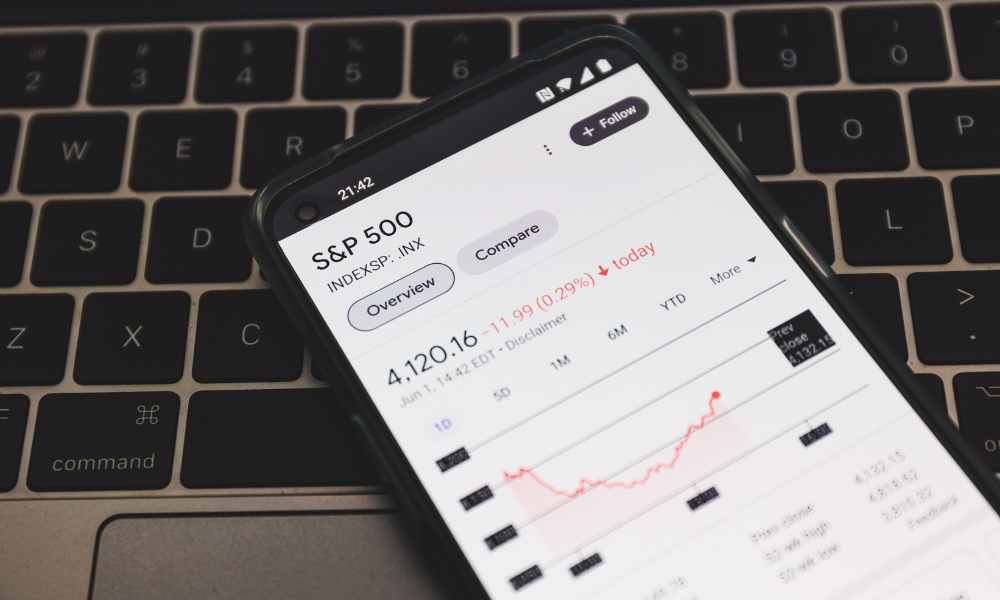Wall Street’s rally lifts S&P 500 over 40% above long-term P/E average, stirring concerns of a pullback

The S&P 500 is trading over 40 percent above its 40-year average P/E ratio, prompting questions about whether valuations can hold if earnings or economic assumptions falter, as reported by Reuters.
As of Tuesday, the index’s forward P/E ratio stood at 22.2, well above the long-term average of 15.8 and roughly 20 percent above the 10-year average of 18.6, based on LSEG Datastream.
This valuation level has occurred only about 7 percent of the time in the past four decades. A price-to-expected-sales metric also shows the S&P 500 trading more than 60 percent above its 20-year average.
Keith Lerner, co-chief investment officer at Truist Advisory Services, said, “By pretty much every historical metric (the market’s valuation) is rich. The question investors are grappling with is, is it warranted?”
The current valuation debate follows a 25 percent rally since April and a 6 percent gain so far in 2025, as investors became less concerned that US President Donald Trump’s “Liberation Day” tariffs would trigger a recession.
Over the past three years, Reuters reported that the index has risen more than 60 percent.
Investors attribute part of the valuation rise to the growing weight of profitable technology companies in the index.
According to S&P Dow Jones Indices, the S&P 500’s operating profit margin reached 12 percent at the end of 2024, compared to 9 percent in 2014.
David Bianco, Americas chief investment officer at DWS Group, said the equity market has become “fairly dismissive of any kind of significant recession risk.”
He added that investors seem convinced the S&P will generate around 10 percent earnings growth for a few years following this year.
With S&P 500 earnings expected to grow 6.5 percent in the second quarter and rise another 14 percent in 2026, some investors see room for continued optimism.
Ed Clissold, chief US strategist at Ned Davis Research, said, “A lot of good news is priced into stocks at these levels.”
He also noted that while elevated valuations tend to indicate weaker long-term returns, they are not reliable “timing tools” for short-term direction.
Still, others are growing cautious.
Patrick Ryan, chief investment strategist at Madison Investments, said, “On the broadest basis, the market has clearly got a valuation headwind relative to where it has been in history.”
Some market participants are rotating into small-cap and international equities, where valuations are considered more modest.
Ryan added, “There are alternatives out there for you to move your capital to,” citing the 10-year US Treasury yield of 4.5 percent—well above levels from most of the past 15 years.
Scott Wren, senior global market strategist at Wells Fargo Investment Institute, said the firm is advising clients to reduce equity exposure in sectors such as industrials and consumer discretionary.
According to Reuters, the firm’s year-end S&P 500 target is 6,000—about 4 percent below current levels.
“Valuation-wise, stocks are pretty lofty,” Wren said, adding, “Where is the line in the sand between expensive and not expensive? It’s harder to determine that.”
Valuations may be further tested if political or economic risks materialise.
One concern is that the US administration might not reach agreements with trading partners ahead of the August 1 deadline, when new tariffs are set to begin.
Another is uncertainty over the possible early departure of US Federal Reserve Chair Jerome Powell, who has faced pressure from Trump.
In past downturns, the index’s valuation has dropped sharply. In April, the P/E ratio fell to 17.9, and during the 2022 bear market, it declined to 15.3.
Clissold said that if artificial intelligence adoption materially boosts the economy, “then maybe the valuations would be justified because the earnings growth the next few years could be substantial.”



